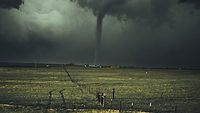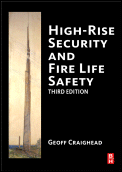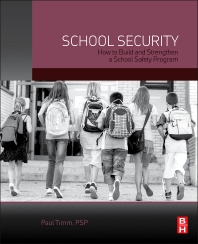Emergencies and Action Plans

Overcoming water challenges during emergencies. From Gibbs Technologies, it has the first commercially viable high-speed amphibian Quadbike. According to Quadski founder Alan Gibbs, “I know consumers will love driving a Quadski on land one minute and then on the sea the next. But there is a very serious side to Quadski as well: emergency services and aid workers will be able to reach areas and people no two or four wheel drive vehicle could reach.”

One of the latest developments, released with little fanfare, is the City of New York’s Rule 6-02 requiring that Occupancy Group E buildings, meeting specific requirements, develop and submit an Emergency Action Plan (EAP) before the end of the year. This requirement will primarily affect commercial buildings greater than six stories high. This is a proactive effort by the city and Fire Department of New York to promote building occupant safety.
The new EAPs are to address “emergencies” including “an incident involving an explosion, a biological, chemical, radiological, nuclear or other chemical incident or release, natural disaster, or the threat thereof, or a declaration of emergency by a lawful authority.” Prior to this rule, only fires had formal evacuation requirements.
Each building’s EAP is to provide for sheltering-in-place, in-building relocations, partial evacuations and building evacuations, addressing in what circumstances these would occur and how they would be implemented. The rule also provides requirements for training of building staff (i.e. EAP Directors) and building occupants. This is important since we all know that the best plan in the world is not effective unless people have been trained on its implementation.

Beyond terrorism, most emergencies have to do with
weather. In certain operations, security vehicles need
to handle dry and wet situations. Here Rodedawg
International Industries targets emergency rescue,
disaster relief and private security agencies worldwide
with its amphibious (land and water) 4x4 off-road
vehicles.
DESIGN AND RESPONSE
In order to create an effective and thoughtful plan, it will be important to understand the building design, and how that building will respond to different emergencies.For instance, many of the buildings in New York City have steel frames with unreinforced masonry material filling the spaces between the columns and beams. While these walls can look “solid as a rock,” they may respond poorly to an explosion, potentially throwing heavy and dangerous debris into the building. This is the type of information to be considered when planning for response to a bomb threat.
Another challenge can be planning for occupant movement after an explosion or high wind event. If the exterior skin of the building is severely damaged, debris and overhead hazards can impede evacuation and rescue. Debris can block stairwells and exits, and damaged overhead windows and façades may be dangling from the building, posing major hazards for people in the immediate vicinity. By reviewing the building design and anticipating those exits, which may be blocked, alternate routes can be prepared, or building enhancements can be considered. For instance, if an exit route is next to a glass wall, there will likely be broken glass that can cut people or create trip and fall hazards. In this case, alternate routes should be planned to ensure safe evacuation. Similarly, brick façades or sunshades that are not designed to resist explosions can block exit doors and trap people. Localized retrofits may therefore be beneficial in areas surrounding emergency exits.

Keeping track of time is important during emergencies. The iBeam Optical Timepiece - with its built-in flashlight
and pop-up magnifying lens – offers employers and security officers a timely solution for emergency lighting and for
reading small print. The watch retails for $90.
SIDEBAR
World Disaster Response Summit
It’s Jan. 23 at the Georgia World Congress Center in Atlanta. Hundreds of billions of dollars are being spent to respond to disasters in the United States and around the world. The best disaster response solutions are needed now. Plan to participate in this major international event if you are active in Katrina reconstruction, disaster housing, temporary structures, emergency communications, emergency command and control, aerial surveillance, emergency health, water purification, emergency energy solutions, emergency food solutions, hurricane preparedness, pandemic flu preparedness, biodefense, earthquake preparedness, tsunami preparedness, facility security, business continuity, risk management, disaster management, and other areas preparing for and responding to a man-made or natural disasters.The Summit features a major trade show, general session, workshops, industry presentations, and many networking opportunities. More information at rec.dev.com.
Looking for a reprint of this article?
From high-res PDFs to custom plaques, order your copy today!








